The Argentinian IFV
VCTP stands for "Vehículo de Combate Transporte de Personal". Also called TAM VCTP, it is the modern Infantry Fighting Vehicle of the Argentinian Army. It shares most of its components with the TAM tank, but more VCTPs were produced than TAMs. Both vehicles were built by the state-owned Tanque Argentino Mediano Sociedad del Estado (or TAMSE) before production was stopped altogether in 1983.At that stage, only 100 VCTPs have been delivered out of an order of 312, and production resumed once again before 1995 when the order was raised to 500 (this figure was never attained). Historically, the first requirements date back to the 1970s when a replacement was needed for the M3/M5 half tracks in service at that time. The new vehicle was to be based on the 1971 Thyssen German Marder chassis. The design work started in 1977 at TAMSE.
Design
The VCTP chassis is similar to the TAM, but the hull is roomier. It has a rear compartment, large enough for 10 infantrymen, being able to enter or exit the vehicle through the rear door. The infantrymen can fire on the move through six pistol ports, three on each side of the vehicle. The central rapid-fire 20 mm (0.79 in) Rheinmetall Rh-202 or Hispano-Suiza Oerlikon Kontraves KAD 18 autocannon is placed in a two-man turret. It is fired by the leader of the infantry platoon within the vehicle. The autocannon has 880 rounds in store and can fire the DM63 armor-piercing round, which is able to destroy most IFVs. In addition, a roof-mounted FN-MAG GMPG is located on top of the turret for AA defense. There is an additional remote-controlled FN-MAG on the rear of the vehicle.The first vehicles had the 20 mm (0.79 in) cañón automático Rh-202, but the final serial production vehicles used the Hispano-Suiza Oerlikon Kontraves KAD 18. Like on the TAM, the main engine is located on the front-right side with the driver on the right. The driver has a sliding hatch and three vision blocks, the central one can be replaced by a thermal imaging unit. The commander has a modified 7-vision block cupola.
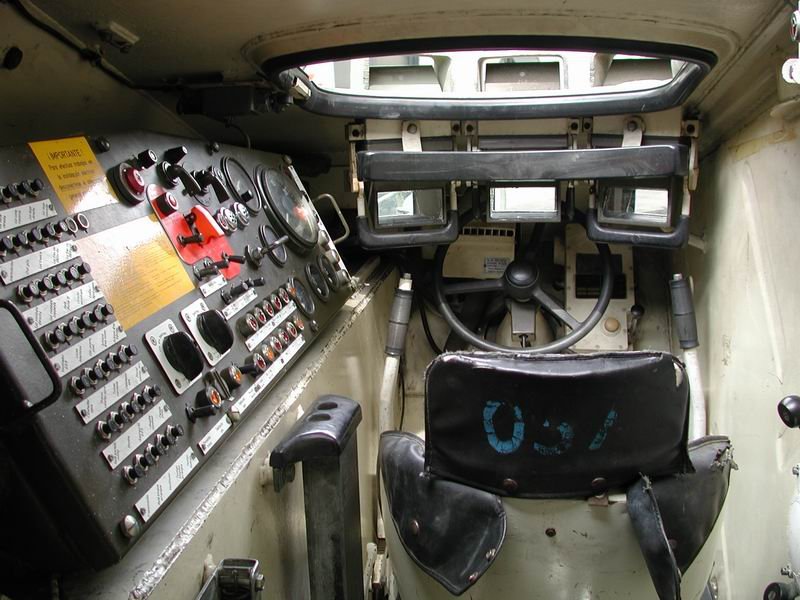
TAM VCTP driver position
Like the TAM, production of the VCTP still shared many components with the German Marder, but at least 70% of the parts were produced in Argentina. The main engine is the same MTU Friedrichshafen MB833 KA500 6-cylinder supercharged diesel, which develops 720 hp at 2400 rpm, coupled with a Renk transmission, 6 speeds (5 forward, one reverse). Air intake is through a front-right grille, and replacement of the engine can be done through a large hinged door panel opening to the right.
Mobility specifications include a top speed of 75 to 80 km/h (46-49 mph) on flat ground, the capability to climb a 60% slope gradient, 30% side slope, 1 m vertical step, gap a 2.5 m wide trench, or ford 1.5 m deep water without preparation. The vehicles are NBC protected, with two banks of four Webman Gmbh 88 mm smoke dischargers fitted on either side of the hull for concealment.
The VCTP in action
Once entered in service, VCTPs first saw action in Argentina, during the military uprisings of Carapintadas, and during the recovery of Rimec 3 "General Belgrano" during the takeover of La Tablada. Conflicting sources point to an introduction to military service in 1976, 1979 or 1983. It seems, however, to have already been in service when the Falkland war started in 1982. In 1992, 15 vehicles were deployed to Croatia (UN mission UNPROFOR), and formed the Argentine Army armored battalion (BEA), part of the eighth contingent (BEA 8). They were used for logistics, escort missions, and protection of civilians. They were removed from action in August 1995.Main variants of the vehicle are the VCTM 120-mm mortar carrier and the VCPC command vehicle. Generally simpler compared to the Marder, the VCTP is also faster, due to its more powerful engine. But despite all its advantages, the VCTP was never exported. The level of German technology included could also be an issue due to thirlicensees licence issues. Thyssen-Henschel is now part of the larger Rheinmetall Landsysteme group.
VCTP specifications |
|
| Dimensions | 6.9x3.29x2.67 m 22.6 x10.8 x8.8 ft |
| Total weight, battle ready | 28.2 tons (31 long tonnes) (68,343 Ibs) |
| Crew | 2+10 (driver, commander, platoon) |
| Propulsion | 720hp MTU MB833, V6 diesel 25,6 hp/t |
| Suspension | 6 torsion bar units |
| Speed (road) | 75-80 km/h (50 mph) |
| Range | 520-870 with additional tanks km (367 mi) |
| Armament | 20 mm (0.79 in) Autocannon KAD18, 800 rounds 2x 7.62 mm (0.3 in) GMPG 2000 rds |
| Armor | 45 to 75 mm front (1.77 to 2.95 in) |
| Total production | 350 in 1976-1995 |
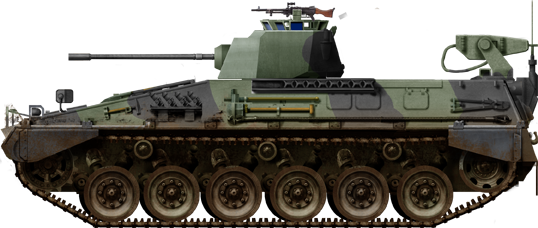
Initial series VCTP IFV with the green/dark green livery.
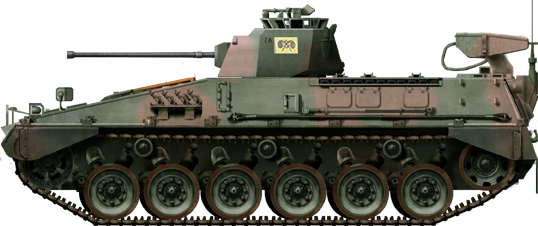
VCTP in another camouflage livery type.
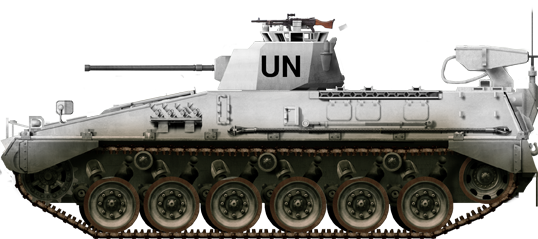
VCTP in washable white UN livery, Croatia, 1992.
Gallery

TAM VCTP at a military exposition
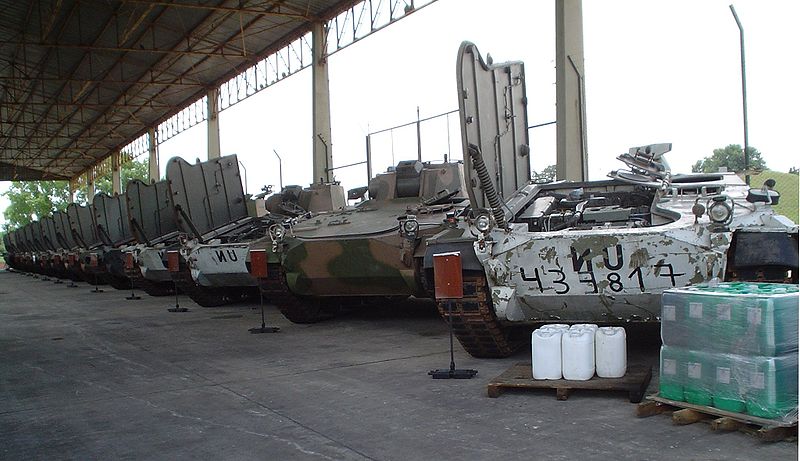
TAM VCTP in Croatia, 1992.
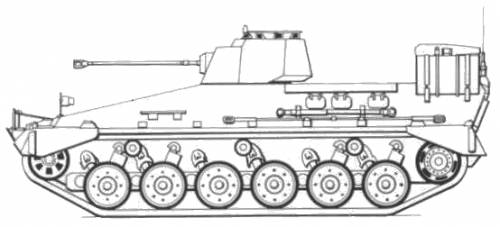
Technical drawing of the VCTP

Cold War Tanks


































Cold war tanks posters

Cold War Main Battle Tanks

Cold War Soviet Army

